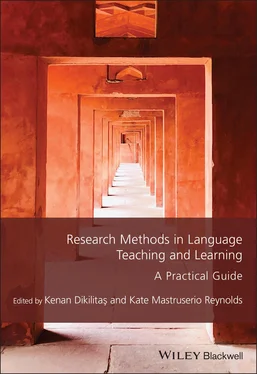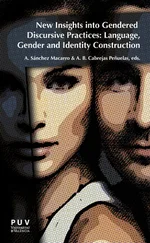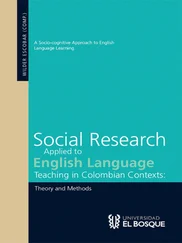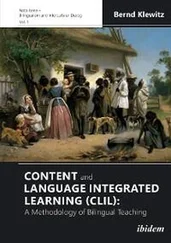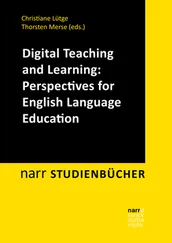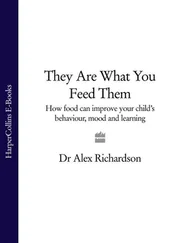Research Methods in Language Teaching and Learning
Здесь есть возможность читать онлайн «Research Methods in Language Teaching and Learning» — ознакомительный отрывок электронной книги совершенно бесплатно, а после прочтения отрывка купить полную версию. В некоторых случаях можно слушать аудио, скачать через торрент в формате fb2 и присутствует краткое содержание. Жанр: unrecognised, на английском языке. Описание произведения, (предисловие) а так же отзывы посетителей доступны на портале библиотеки ЛибКат.
- Название:Research Methods in Language Teaching and Learning
- Автор:
- Жанр:
- Год:неизвестен
- ISBN:нет данных
- Рейтинг книги:5 / 5. Голосов: 1
-
Избранное:Добавить в избранное
- Отзывы:
-
Ваша оценка:
- 100
- 1
- 2
- 3
- 4
- 5
Research Methods in Language Teaching and Learning: краткое содержание, описание и аннотация
Предлагаем к чтению аннотацию, описание, краткое содержание или предисловие (зависит от того, что написал сам автор книги «Research Methods in Language Teaching and Learning»). Если вы не нашли необходимую информацию о книге — напишите в комментариях, мы постараемся отыскать её.
Research Methods in Language Teaching and Learning
Research Methods in Language Teaching and Learning
Research Methods in Language Teaching and Learning — читать онлайн ознакомительный отрывок
Ниже представлен текст книги, разбитый по страницам. Система сохранения места последней прочитанной страницы, позволяет с удобством читать онлайн бесплатно книгу «Research Methods in Language Teaching and Learning», без необходимости каждый раз заново искать на чём Вы остановились. Поставьте закладку, и сможете в любой момент перейти на страницу, на которой закончили чтение.
Интервал:
Закладка:
In Chapter 6, “Online and Hybrid Research Using Case Study and Ethnographic Approaches: A Decision-Making Dialogue Between Two Researchers,” Faridah Pawan and Chaoran Wang narrate their experiences with the methods they adopted by structuring a conversational discoursal style in which they discuss methodological issues creatively as a narrativized story between the authors. They introduce how they used online and hybrid data in order to generate practical knowledge about teaching that takes place in an online and hybrid mode.
In Chapter 7, “Ethnography and a Heuristics of the Heart: Allied Solidarity with Indigenous Language and Literacy Activism,” Ari Sherris shares with us his story of engaging in and learning about ethnography since he first decided to become an ethnographer. Sherris introduces key trajectories he went through and emphasizes the methodological challenges by offering a unique researcher story. In the chapter, we read about his actual application of ethnography and heuristic inquiry as research methods in multiple communities.
In Chapter 8, “Action Research in Teacher Education: Practical and Theoretical Challenges and Opportunities from Norway,” Dag Husebø introduces action research as it has been implemented in the Norwegian context. In addition to the step-by-step presentation of the method, Husebø also narrates how action research is used in context-specific teacher preparation and development with diverse participants in educational settings.
In Chapter 9, “Discourse Analysis as a Research Methodology for L2 Context,” Hatime Çiftçi narrates her story of employing discourse analysis of context-specific linguistic politeness from the perspective of interactional sociolinguistics. She offers a unique model for those who are interested in implementing discourse analysis in L2 research. The chapter highlights the key methodological issues that L2 researchers could revisit and reconsider in the light of her critically interpreted insights from her PhD research.
In Chapter 10, “Conversation Analysis in TESOL,” Olcay Sert introduces how he employed multimodal conversation analysis in his single-case longitudinal research in which learning and teaching implications were evident and traceable. Sert narrates the analytical procedures and theoretical framework that pertain to conversation analysis and reveals the methodological challenges. In addition, he exemplifies a number of instances of decision-making processes in each phase of conversation analysis which can inevitably be encountered by others who adopt the method.
Having introduced 10 chapters adopting various approaches to qualitative paradigm, we next present the contributions that include qualitative characteristics within quantitative design. For example, in Chapter 11, “Combining Corpus-Based Methods With Interviews in Applied Linguistics Research,” Duygu Çandarlı describes the processes of integrating corpus-based methods into mixed methodology while investigating second language writing. Çandarlı justifies the unique research-related features of corpus methods which offer strong grounds for researchers to adopt. She offers her contextualized experiences with this method and her use of interviews to expose novel insights into the process of second language writing, which is not traceable in the corpus data only.
Comparably, in Chapter 12, “Exploratory Survey Research,” Jason Anderson and Amy Lightfoot recount the procedures of using exploratory survey research to explore the translanguaging phenomenon in English language classrooms in India. Anderson and Lightfoot describe how they constructed and employed the questionnaire method designed to collect both quantitative and qualitative data, adopting flexible question forms. They also discuss the methodological advantages and limitations of implementing questionnaires in exploring phenomena in educational settings. Their narrative recounts how questionnaires can be tools for exploring issues rather than testing an existing hypothesis as in the traditional surveys.
Relatedly, in Chapter 13, “Using Mixed Methods Design to Investigate Vocabulary Acquisition,” Andrea B. Hellman introduces her narrative portraying how she explored vocabulary acquisition using methods that belong to both quantitative and qualitative paradigms, revealing key justifications and procedures she followed closely to ensure rigor in methodological practices. It is evident that there are controversial attitudes towards investigating a research phenomenon adopting two paradigms. However, sharing her own contextualized experiences, Hellman also provides profound details that could set a methodological model for researchers interested in using mixed methods in applied linguistics to consider.
We recognize that research studies involving only quantitative research are less common in the field. We invited three key contributions to our book that follow only quantitative research methods, including data collection tools and data analysis. For example, in Chapter 14, “Correlational Analysis in SLA: Insights From the Study Abroad Research,” Zeynep Köylü introduces correlation analysis as a quantitative method that is adopted to investigate the phenomenon of study abroad as a specific topic in second language acquisition. Throughout her chapter, Köylü provides step-by-step implementation of correlation analysis by highlighting the key methodological considerations that emerged from her research experiences. The chapter incorporates unique researcher reflections on fundamental decisions that could help others implementing this analysis in their research studies in applied linguistics and encourage more researchers to undertake this research approach.
On the other hand, in Chapter 15, “Conducting a Non-Experimental Design Quantitative Study and the Application of Partial Least Squares Structural Equation Modeling,” as an alternative to univariate and bivariate analysis including correlation, Hilal Peker introduces a second-generation analysis technique: structural equation modeling. Peker justifies the methodological advantages and the potential to generate hypotheses and theories rather than testing existing hypotheses by adopting structural equation modeling. She provides an in-depth narrative on her actual experiences using this model with clear corresponding examples from her published research.
In Chapter 16, “Behind the Scenes of a Longitudinal Large-Scale Randomized Controlled Trial Study with Native Spanish Speakers: Lessons Learned,” Rafael Lara-Alecio, Beverly J. Irby, Fuhui Tong, Cindy Guerrero, Kara L. Sutton-Jones, and Nahed Abdelrahman narrate their experiences in using longitudinal large-scale randomized controlled trial studies in which they compared transitional bilingual education and structured English immersion in kindergarten. The researchers depict the key methodological experiences to reveal potential challenges and opportunities in such a broad collaborative research process with a large participant group.
We also included two chapters that can be categorized as systematic review characterized as research on published research. In Chapter 17, “Quantitative Systematic Reviews: A Lived Experience,” Tamara Kalandadze recounts her actual methodological experiences with planning and conducting two of her systematic reviews that draw on published quantitative studies. She introduces emerging challenges and opportunities alike, which could help others interested in learning to write systematic reviews purely based in the quantitative paradigm particularly in the area of language and communication.
Comparably, in our final chapter, “Exploring the (Un‐)Explored in Applied Linguistics: Conducting a Systematic Review in Intercultural Communicative Competence,” Maria losifina Avgousti narrates her methodological research experiences with conducting a systematic review of a topics drawing on published qualitative research studies. In her published research she reviewed qualitative studies that investigated intercultural communicative competence within the scope of language learning and teaching. She highlights key considerations in reviewing qualitative studies to generate generalizable knowledge for the area of research.
Читать дальшеИнтервал:
Закладка:
Похожие книги на «Research Methods in Language Teaching and Learning»
Представляем Вашему вниманию похожие книги на «Research Methods in Language Teaching and Learning» списком для выбора. Мы отобрали схожую по названию и смыслу литературу в надежде предоставить читателям больше вариантов отыскать новые, интересные, ещё непрочитанные произведения.
Обсуждение, отзывы о книге «Research Methods in Language Teaching and Learning» и просто собственные мнения читателей. Оставьте ваши комментарии, напишите, что Вы думаете о произведении, его смысле или главных героях. Укажите что конкретно понравилось, а что нет, и почему Вы так считаете.
